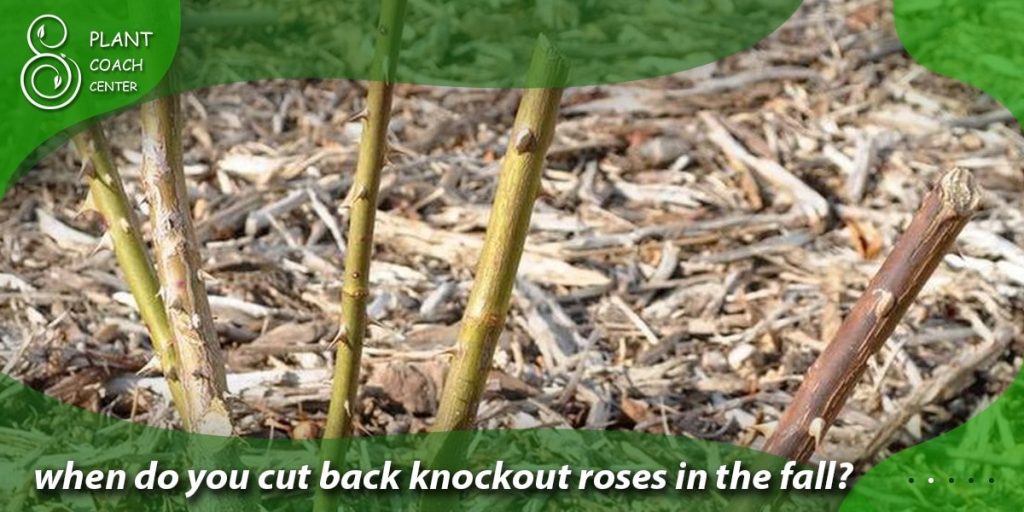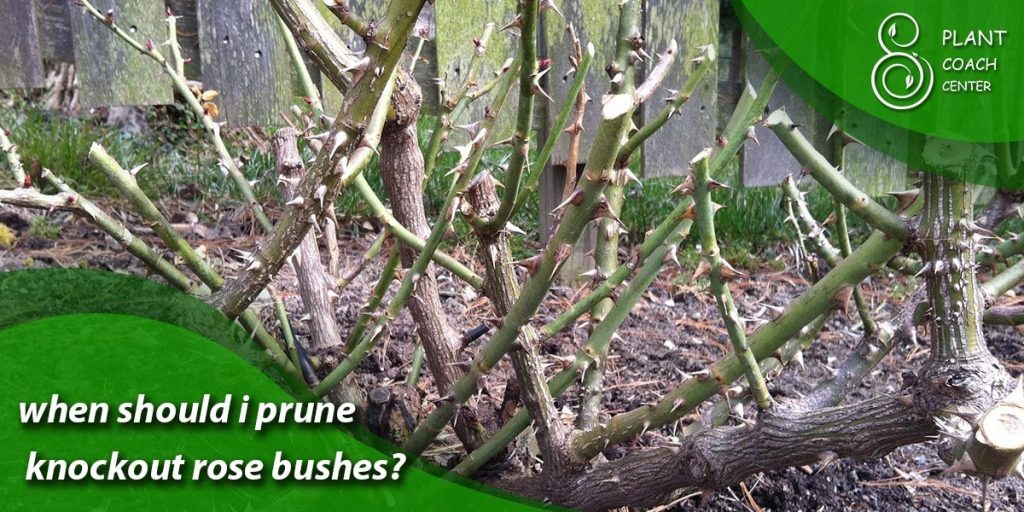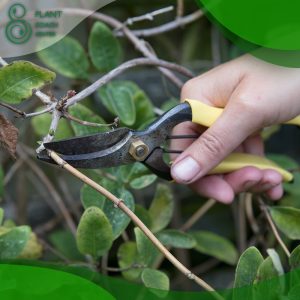When Do You Prune Knockout Roses?
Welcome to the vibrant world of rose gardening, where the allure of stunning blooms meets the artistry of horticultural care. Among the most cherished varieties, knockout roses have captivated garden enthusiasts with their resplendent colors and robust growth. Yet, to truly unlock their full potential, one must grasp the delicate dance of pruning – a choreography that harmonizes nature’s beauty with human touch.
Pruning knockout roses isn’t just about snipping away errant branches; it’s an intricate endeavor that involves timing, technique, and a deep understanding of the plant’s biology. In this guide, we journeyed through the seasons, uncovering the secrets behind when and how to prune knockout roses. Whether you’re an aspiring green thumb or a seasoned gardener, this article will equip you with the knowledge to sculpt your rose bushes into flourishing masterpieces, ensuring their aesthetic grandeur and overall vitality.

Seasonal Timing
Pruning your knockout roses at the right time of year is crucial to their overall health and blooming prowess. The timing of your pruning endeavors can significantly impact the abundance and vibrancy of the blooms you’ll enjoy.
Early Spring Awakening
As the chill of winter gives way to the promise of spring, it’s time to wake your knockout roses from their slumber. Generally, early spring, right before new growth emerges, is an ideal time for your first pruning session. Look for signs of new buds or when the first set of leaves appears. By carefully trimming away dead or damaged wood and weak branches, you’re setting the stage for fresh, vigorous growth.
Summer Trimming Ritual
Once your knockout roses have delighted you with their first glorious blooms, consider light pruning during the mid-summer months. Around late June or early July, after the first wave of blossoms has faded, you can trim back spent flower clusters. This practice, called deadheading, encourages the plant to divert its energy towards producing new booms rather than forming seeds. Additionally, if branches are overcrowded or rubbing against each other, you can selectively trim them to maintain an open and airy growth pattern.
Fall Preparations
As autumn approaches and the growing season winds down, it’s time for a more substantial pruning session. This can be done around late fall or early winter when the plant goes dormant. Focus on shaping the knockout rose by removing any remaining dead or diseased wood and thinning out the branches to promote better air circulation. However, avoid heavy pruning in the fall, as this might encourage new growth that will only have time to harden off after winter frost.
Mastering the Basics
Pruning knockout roses involves more than just snipping away branches at random. It’s an intricate art that requires a solid grasp of pruning techniques to ensure the health and vitality of your plants.
Types of Pruning Cuts
There are several types of pruning cuts you should familiarize yourself with before you start. The first is the cleaning cut, which removes dead, diseased, or weak branches. This cut is essential for maintaining the overall health of the plant. The thinning cut involves removing entire branches at their point of origin, helping to improve air circulation and reduce overcrowding. The heading cut shapes the plant and encourages new growth by snipping just above a leaf node.
Tools of the Trade
Equipping yourself with the right tools is paramount to successful pruning. A pair of sharp, clean bypass pruners will be your primary tool for making precise cuts. Loppers can be helpful for thicker branches, while pruning saws are essential for tackling more significant, more mature growth.
Angle and Direction
When making cuts, the angle and direction matter. Aim for clean cuts at a 45-degree angle, about ¼ inch above an outward-facing bud or leaf node. This helps prevent water accumulation on the cut surface and encourages growth in the desired direction.
Avoiding Stub Cuts
Stub cuts are those where a portion of the branch is left behind and can become breeding grounds for disease. Always flush your amounts with the main stem or bud to prevent stubs.
Observation and Adaptation
While mastering the techniques is crucial, observing your knockout roses as individuals is equally important. Each plant may have its growth patterns and specific needs. Regularly assess your roses’ health, shape, and vigor, adjusting your pruning strategies accordingly.

Reviving Your Garden’s Beauty
Pruning knockout roses isn’t just a routine task; it’s an artistic endeavor that can breathe new life into your garden, enhancing both its visual appeal and the overall health of your plants.
Selective Trimming for Vigorous Blooms
One of the critical aspects of reviving your garden’s beauty through pruning is selective trimming. By carefully removing spent blooms and thinning out overgrown branches, you encourage the plant to channel its energy into producing new growth and blossoms. This practice can lead to a profusion of vibrant and more prominent flowers that steal the spotlight in your garden.
Shaping for Aesthetics
Pruning also allows you to sculpt your knockout roses into visually pleasing shapes. Whether you prefer a formal, symmetrical appearance or a more relaxed, naturalistic form, judicious pruning can help you achieve your desired aesthetic. Regular shaping ensures that your roses complement the overall layout of your garden and contribute to a harmonious landscape.
Preventing Disease and Pest Infestations
Overgrown, tangled branches can create a haven for pests and diseases. Pruning opens up the plant, allowing better air circulation and sunlight penetration. This reduction in humidity and darkness can discourage the development of common rose ailments like powdery mildew and aphid infestations, safeguarding your garden’s health.
Encouraging New Growth
Pruning stimulates the plant to generate new growth, leading to a more robust and vigorous rose bush. Strategic cuts near leaf nodes prompt the plant to send out new shoots, increasing the number of potential flowering sites and ultimately creating a fuller, more luxuriant appearance.
Artistry in Motion
Reviving your garden’s beauty through knockout rose pruning is a blend of science and art. It’s an opportunity to become the curator of your own natural gallery, where you shape living sculptures that evolve over time. Remember, each cut you make is a brushstroke on the canvas of your garden, so approach it with a discerning eye and a sense of creative freedom.

Trimming for Health
Pruning knockout roses is more than just a cosmetic task; it’s a critical component of ensuring your plants’ long-term health and vitality. Understanding the connection between proper pruning and plant well-being can help cultivate a flourishing garden.
Disease Prevention and Removal
Regular pruning is pivotal in preventing and managing diseases in knockout roses. By removing dead or diseased branches, you’re eliminating potential sources of infection. Additionally, adequate spacing from well-thought-out pruning enhances air circulation, reducing the likelihood of fungal diseases that thrive in humid conditions.
Removing Weak Growth
Over time, rose bushes can develop weak, spindly growth that hampers overall health and vigor. You can remove these weak branches through strategic pruning, redirecting the plant’s resources to more robust growth. This ensures that nutrients are directed toward producing stronger stems and abundant blossoms.
Stimulating New Growth
Pruning acts as a catalyst for fresh growth. By making precise cuts just above leaf nodes or buds, you encourage the plant to sprout new shoots and branches. This rejuvenation process leads to a denser, more productive rose bush that can better withstand environmental stressors.
Shape and Balance
Pruning aids in maintaining a balanced structure for your knockout roses. Removing overcrowded or crossing branches eliminates resource competition and helps maintain an open, well-ventilated canopy. This balance prevents uneven growth and ensures that sunlight reaches all parts of the plant, fostering uniform development.
Longevity and Renewal
Properly pruned knockout roses have the potential for a longer lifespan. Regular removal of aged or declining wood stimulates the plant to invest energy in new, healthier growth. This renewal process extends the productive life of your roses, allowing you to enjoy their beauty for many years.
Pruning as Plant Medicine
Consider pruning as a therapeutic practice for your knockout roses. Just as proper nutrition and exercise promote human health, skillful pruning fosters the well-being of your plants. Each cut you make is a step towards fortifying your garden against potential ailments and setbacks, contributing to a garden ecosystem that thrives in harmony.
Shaping Elegance
Pruning knockout roses is a creative pursuit that allows you to sculpt your garden into a haven of elegance. Shaping goes beyond routine maintenance, cultivating a visually striking and harmonious landscape that captivates the eye and evokes a sense of refinement.
Formal vs. Informal Designs
Shaping knockout roses gives you the power to choose between formal and informal designs. Traditional shapes, like hedges and topiaries, involve precise pruning to create geometrically pleasing patterns. On the other hand, casual shaping lets the roses flow more naturally, showcasing the beauty of their free-spirited growth.
Creating Focal Points
You can create stunning focal points in your garden by sculpting your knockout roses. Archways, trellises, and even standalone topiaries draw the gaze and add an element of drama to the landscape. Thoughtful shaping can transform your garden into a living art gallery, where each rose bush contributes to a masterpiece.
Maintaining Proportions
Shaping ensures that your knockout roses complement the surrounding elements in your garden. Properly pruned roses won’t overshadow other plants or compete for attention. Instead, they’ll harmonize with the overall layout, enhancing the aesthetics of your outdoor space.
Espalier Techniques
Espalier, a unique shaping method, involves training roses to grow flat against walls, fences, or supports. This technique maximizes space and creates a captivating display of intertwining branches and blooms. Espaliered knockout roses can infuse a touch of old-world charm into your garden.
Personal Expression
Shaping knockout roses is an opportunity to express your creativity and personal style. Whether you opt for intricate designs or a more relaxed approach, your garden becomes an extension of your artistic vision. The shapes you create can mirror your personality, creating a unique and intimate connection between you and your garden.
A Living Canvas
Think of your garden as a canvas and your pruning shears as the brush that brings your vision to life. Shaping knockout roses transcends mere gardening; it’s a form of self-expression that merges the elegance of nature with your creative impulses. With each careful cut, you’re painting strokes of grace that testify to your skill and passion.

Pruning Dos and Don’ts
Pruning Dos and Don’ts: Pruning knockout roses is a delicate task that requires precision and care. Avoiding common mistakes and understanding the dos and don’ts of pruning can make a significant difference in the health and appearance of your roses.
Dos:
Do Use Clean Tools: Always use sharp, clean pruning tools to make precise cuts. Dirty or dull tools can lead to jagged cuts more susceptible to disease.
Do Prune at the Right Time: Stick to the appropriate pruning schedule for your region and climate. Pruning at the wrong time, such as during the active growing season or before a frost, can harm your plants.
Do Remove Dead or Diseased Wood: Regularly remove dead, diseased, or damaged branches to prevent the spread of diseases and encourage healthy growth.
Do Prune Above Outward-Facing Buds: Make cuts at a 45-degree angle just above a bud or leaf node that faces away from the center of the plant. This promotes outward growth and prevents branches from crossing or rubbing against each other.
Do Step Back and Assess: Before making any significant cuts, take a step back and assess the plant’s overall shape. Consider how each amount will impact the plant’s structure and appearance.
Don’ts:
Don’t Prune Too Early in Spring: Pruning too early, before the last frost has passed, can damage new growth and lead to setbacks in your plant’s development.
Don’t Overprune: While removing dead and weak wood is essential, over-pruning can stress the plant and hinder its ability to produce blooms.
Don’t Leave Stub Cuts: Leaving stubs when making cuts can invite disease and pests. Always make clean cuts flush with the main stem or bud.
Refrain from Neglect Proper Technique: Improper cuts, such as cutting too close to the bud or at the wrong angle, can lead to disease entry points and hinder new growth.
Don’t Be Afraid to Ask for Help: If you need clarification on pruning techniques, seeking guidance from experienced gardeners or professionals is okay. Improper pruning can have long-lasting consequences on the health of your knockout roses.

Year-Round Care Guide
Pruning knockout roses is just one piece of the puzzle for maintaining a thriving rose garden. A comprehensive year-round care plan ensures that your knockout roses remain healthy, vigorous, and a source of pride every season.
Winter Preparations
As winter approaches, protect your knockout roses from the cold. Mulch around the base of the plants to insulate the roots and prevent frost heaving. Consider applying a burlap or other protective material around the plants to shield them from harsh winds and freezing temperatures.
Spring Awakening
Kickstart the growing season by pruning your knockout roses in early spring. Remove dead wood, weak branches, and any growth damaged by winter weather. This rejuvenation pruning sets the stage for robust new growth and blooms.
Summer Care
Regularly, deadhead spent flowers during the summer to encourage continuous blooming. Look for pests and diseases and address any issues promptly. Water deeply and consistently during dry spells to ensure the roses remain adequately hydrated.
Fall Renewal
In the late fall or early winter, perform a more comprehensive pruning session. Remove any remaining dead or diseased wood and shape the plants for the coming season. Consider applying a layer of fresh mulch to protect the roots during the colder months.
Fertilization
Throughout the growing season, provide your knockout roses with a balanced fertilizer. A slow-release fertilizer rich in nutrients, such as nitrogen, phosphorus, and potassium, will support healthy growth and robust blooms.
Hygiene and Cleaning
Regularly clean up fallen leaves and debris around your knockout roses. This prevents the accumulation of disease-causing agents and pests, reducing the risk of infection.
Observation and Adjustment
Monitor your knockout roses year-round. Watch for changes in growth, color, and overall health. Adjust your care regimen accordingly, whether it’s increasing watering during a heatwave or addressing signs of disease promptly.
Winterization Repeat
As winter returns, repeat the protective measures you took at the beginning of the cold season. Mulch, insulating materials, and continued monitoring ensure that your knockout roses are well-prepared to weather the winter months.
Conclusion
In the intricate world of rose cultivation, pruning knockout roses emerges as a cornerstone of successful gardening. With each precise cut, we wield the power to shape, heal, and enhance the vitality of these exquisite blooms. From mastering the techniques that breathe life into our garden’s beauty to understanding the rhythms of seasonal pruning, we become stewards of nature’s elegance.
Remember, every snip is a testament to our dedication, with the potential to turn a simple plant into a masterpiece. So, whether you’re sculpting shapes that echo your artistic sensibilities or tending to the health of your roses year-round, the journey is as transformative as the blossoms themselves. To delve further into the enchanting world of rose care, visit PlantCouchCenter.com, where a wealth of knowledge awaits to guide you through the wondrous realm of knockout rose pruning and beyond.
When is the best time to prune knockout roses?
Prune knockout roses in early spring before new growth appears, during the summer to deadhead spent blooms, and in late fall or early winter for shaping.
How do I avoid over-pruning my knockout roses?
Avoid removing more than one-third of the plant's growth in a single pruning session to prevent stress and encourage healthy growth.
Can I prune knockout roses during winter?
While you can perform light pruning during winter, major pruning is best done in late fall or early spring to avoid potential frost damage.







